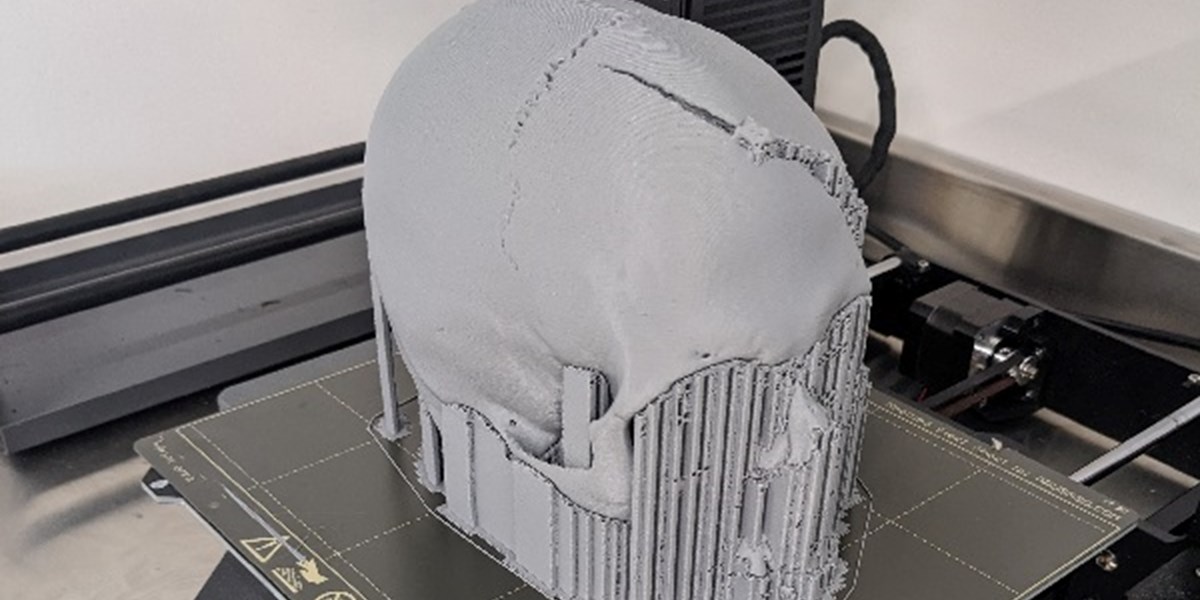
The University of Portsmouth has produced a 3D printed skull that has been used as evidence in the conviction of five men for murder.
It has highlighted the case in which its team worked with the Hampshire and Isle of Wight Constabulary’s Imaging Unit to create a digital model using data from a CT scan to show injuries sustained by the victim.
This supported the pathologist’s testimony that he had been struck multiple times and sustained catastrophic brain damage, and enabled the jury to visualise the trauma inflicted.
Victim Frazer Brabant was found lying in his front garden with serious head injuries in Basingstoke on 31 October 2019. He was taken to hospital where he remained in a coma until 21 January 2020 when he died.
Four men were found guilty of murder and received life sentences at Winchester Crown Court on 14 July this year. A fifth man was convicted of conspiracy to cause grievous bodily harm with intent and sentenced to six years.
Reconstructing the anatomy
Dr Morgan Lowther, senior scientific officer at the university, said: “This was an unusual case because the victim had survived some very traumatic injuries and spent three months in hospital, before he sadly passed away. This meant that there were hospital quality X-ray scans of his injuries, which we could use to reconstruct the anatomy.
“Using the digital model provided by the hospital scans, we could 3D print a physical copy, building up material layer by layer. The exhibit was made from a material called PLA (polylactic acid), and by adding an internal scaffold, we made the anatomy stable enough to be handled and presented in court.”
“I attended the trial and saw the pathologist use the model to help guide the jury through the injuries sustained by the victim. He was able to demonstrate the order in which the blows were likely to have occurred, whether they’d come at the same angle, and whether they would have come from the same assailant or the same weapon.
“The jurors were allowed to handle the model and take it into the deliberation room. I think it was a valuable piece of evidence to help them understand the severity of the attack.”
Paul Taylor, the national policing chief scientific advisor, commented: “This innovative use of 3D technology to explain evidence to jurors shows how policing is embracing the rapid developments in scanning and computer modelling capabilities to bring justice to victims.
“We are rapidly moving to a place where presentations of expert evidence can and should be more than 2D pictures. I anticipate 3D printing will continue to help make complex evidence more accessible for jurors in years to come.
"The cross-pollination of ideas and expertise between forces and academia is crucial to creating innovative, workable solutions for policing and improving the criminal justice system. This collaboration between Hampshire and Isle of Wight Constabulary and the University of Portsmouth is an excellent example of just that.”





